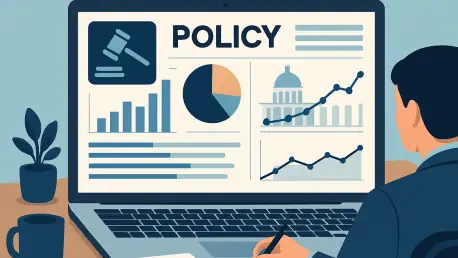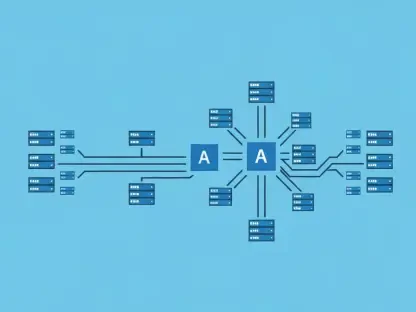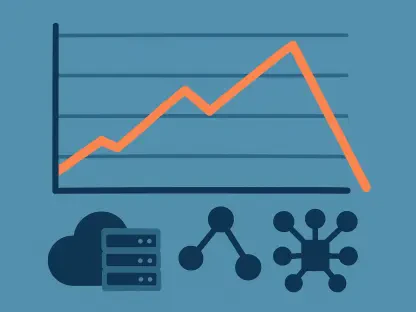In the ever-shifting arena of public policy, where decisions on federal budget appropriations can shape the trajectory of entire sectors, government affairs professionals face an uphill battle to make their voices heard amidst a cacophony of competing interests. The federal appropriations process, a critical mechanism for allocating discretionary funds to areas like defense, education, and healthcare, is riddled with complexities, from intricate legislative timelines to partisan gridlock. For those tasked with influencing these outcomes, the stakes are extraordinarily high, as a single funding decision can impact communities, organizations, and national priorities for years to come. Enter public affairs software—a transformative toolset designed to cut through the noise and empower advocates with data, real-time insights, and strategic precision. These platforms are no longer just a convenience; they have become indispensable for navigating the labyrinth of policy-making. By consolidating vast amounts of legislative information and facilitating targeted outreach, such technology equips stakeholders to anticipate shifts, seize opportunities, and drive meaningful change. This exploration delves into how these digital solutions are revolutionizing advocacy efforts, offering a lifeline in the high-pressure world of federal budgeting and beyond.
Decoding the Intricacies of Federal Funding
The federal budget appropriations process stands as a cornerstone of national policy, determining how discretionary funds are distributed across critical government functions each fiscal year. This elaborate system kicks off with the President’s budget request, typically expected early in the year, and progresses through congressional budget resolutions and the drafting of appropriations bills. However, the path is rarely smooth, often disrupted by delays that necessitate temporary measures like continuing resolutions to prevent government shutdowns. For public affairs professionals, understanding this framework is paramount, as it sets the stage for where and how influence can be exerted. The process governs funding for everything from transportation infrastructure to health research, making it a battleground for competing priorities. Mastery of its stages—from initial proposals to final legislative approval—provides the foundation for effective advocacy, ensuring stakeholders are not caught off guard by procedural twists.
Equally important is recognizing the key players who shape these funding outcomes. The President wields significant influence through the initial budget proposal and veto power, while congressional committees, particularly the House and Senate Appropriations Committees with their specialized subcommittees, hold the reins on specific allocations. Congressional leadership, including figures like the Speaker of the House, often broker critical deals, while external stakeholders such as lobbyists and agency officials contribute through testimony and strategic campaigns. Each actor represents a potential point of leverage for advocates aiming to sway funding decisions. Navigating this web of influence requires not only knowledge of roles but also an acute awareness of timing, as delays and political dynamics can shift priorities overnight. This complexity highlights the need for tools that offer clarity and real-time updates to keep pace with an ever-evolving legislative landscape.
Seizing Key Moments for Policy Impact
Advocacy within the federal appropriations process is most effective when timed strategically, capitalizing on specific windows of opportunity that arise throughout the legislative cycle. One such critical juncture occurs well before formal congressional action, during the early engagement phase with federal agencies, often months ahead of the President’s budget submission. By aligning priorities with agency proposals at this stage, stakeholders can ensure their initiatives gain traction from the outset. Additionally, moments like subcommittee hearings provide a platform to build support through testimony and data presentation, while markup sessions allow for direct input on bill language and amendments. These early and mid-stage interventions can set the tone for later debates, making them indispensable for shaping funding outcomes in sectors ranging from education to national security.
Beyond timing, the methods of advocacy play a pivotal role in amplifying influence during these key windows. Drafting legislative language for consideration, providing congressional staff with actionable insights, and forging coalitions with like-minded organizations can significantly bolster a cause. Public campaigns and grassroots mobilization further enhance visibility, pressuring lawmakers to prioritize specific funding needs. However, executing these strategies demands meticulous coordination and a deep understanding of legislative nuances, as missteps can alienate key decision-makers. Public affairs software proves invaluable here, offering tools to track bill progress and committee schedules, ensuring advocates strike at the most opportune moments. By aligning efforts with real-time legislative developments, such platforms maximize the impact of advocacy, turning well-timed actions into tangible policy wins.
Navigating Obstacles in Policy Advocacy
The path to influencing federal appropriations is fraught with challenges that test the resilience and adaptability of even the most seasoned government affairs professionals. Partisan gridlock often stalls progress, with ideological divides preventing consensus on funding priorities, while missed deadlines exacerbate the issue—Congress seldom passes all appropriations bills by the fiscal year’s start on October 1. This necessitates reliance on stopgap measures like continuing resolutions, which maintain existing funding levels but delay critical decisions. Such unpredictability can derail advocacy efforts, as stakeholders must constantly recalibrate their strategies to align with shifting timelines and political currents. Staying informed and agile in this environment is a daunting task, often requiring rapid responses to unforeseen legislative bottlenecks.
Adding to these hurdles are legislative tactics that introduce both opportunities and risks for advocates. Earmarks, or congressionally directed spending, allow for targeted funding of specific projects but can spark controversy or derail broader agreements if perceived as wasteful. Similarly, policy riders—provisions attached to appropriations bills—can advance specific agendas but risk provoking opposition or stalling entire packages. Debt limit negotiations further complicate the landscape, as failure to raise the ceiling could trigger economic turmoil, forcing advocates to navigate high-stakes brinkmanship. Public affairs software offers a critical edge in addressing these obstacles, providing real-time alerts on legislative maneuvers and debt ceiling developments. By equipping stakeholders with the foresight to anticipate and counteract these challenges, such technology transforms potential setbacks into manageable hurdles, enabling more effective policy navigation.
Leveraging Evidence for Persuasive Advocacy
In the competitive arena of federal appropriations, where countless initiatives vie for limited funds, data emerges as a powerful tool for cutting through partisan rhetoric and securing legislative support. Compelling evidence, such as detailed cost-benefit analyses or measurable program outcomes, can provide lawmakers with concrete reasons to back specific allocations. For instance, demonstrating how funding for a health research initiative yields long-term savings or societal benefits can sway undecided legislators during tight budget debates. This approach transcends subjective arguments, grounding advocacy in facts that appeal to fiscal responsibility and public good. As evidence-based policymaking gains traction, the ability to present clear, verifiable data becomes a cornerstone of effective influence in congressional hearings and negotiations.
Public affairs software significantly enhances this data-driven strategy by granting access to comprehensive datasets and analytical tools that illuminate government spending patterns and priorities. These platforms enable professionals to track budget allocations across sectors, identify trends, and craft arguments that resonate with legislative goals. Beyond raw figures, integrating real-world case studies can humanize abstract budgets, showing how funding impacts communities or addresses pressing needs. Such narratives, supported by robust data, create a dual appeal—rational and emotional—that can tip the scales during critical votes. By streamlining the process of gathering and presenting evidence, technology ensures that advocacy is not only persuasive but also tailored to the specific interests and concerns of key decision-makers, amplifying its effectiveness in shaping policy outcomes.
Revolutionizing Engagement through Digital Tools
The advent of public affairs software has fundamentally reshaped how government affairs professionals approach policy influence, particularly within the intricate realm of federal budgeting. Platforms designed for this purpose, such as those offering centralized access to budget documents and legislative tracking, eliminate the inefficiencies of fragmented research. By consolidating vast amounts of information—from funding allocations to committee reports—into a single, user-friendly interface, these tools save invaluable time in a field where every hour counts. This efficiency allows advocates to focus less on data collection and more on strategic planning, ensuring that efforts are directed toward high-impact activities. In an environment where legislative developments unfold rapidly, such streamlined access to information becomes a competitive advantage for navigating complex policy landscapes.
Moreover, these digital solutions provide transparency and foresight through real-time updates on government priorities and expenditure patterns. By linking proposed budgets to actual agency spending, they offer a clear view of how funds are utilized, enabling stakeholders to assess program effectiveness and build stronger cases for continued or increased funding. Detailed congressional directories, complete with lawmaker profiles, voting histories, and policy interests, further empower targeted outreach, ensuring that messages are crafted to align with specific legislative agendas. This level of insight transforms raw data into actionable intelligence, allowing professionals to anticipate policy shifts and respond proactively. As a result, public affairs software not only enhances operational efficiency but also elevates the precision and impact of advocacy efforts in shaping federal spending decisions.
Forging Connections for Sustained Influence
While technology offers unparalleled support in navigating policy challenges, the human element remains a critical driver of lasting impact in federal appropriations advocacy. Direct engagement with congressional staff and lawmakers during pivotal moments, such as hearings or markup sessions, fosters trust and establishes credibility that can influence future decisions. These interactions provide opportunities to address concerns, clarify funding needs, and demonstrate alignment with broader legislative goals. Building such relationships requires consistent effort and an understanding of the political landscape, as personal connections often prove decisive in securing support amidst a sea of competing priorities. In policy-making, where decisions are as much about rapport as they are about rationale, these bonds can be the difference between success and oversight.
Public affairs software complements this relationship-building by equipping professionals with the context needed to make outreach meaningful and effective. By identifying key contacts within Congress and providing insights into their priorities, voting records, and district-specific issues, these tools ensure that communications are tailored for maximum resonance. For example, framing a funding request to highlight benefits for a lawmaker’s constituents can create a compelling case that transcends partisan lines. This personalized approach, supported by technology, enhances the likelihood of productive dialogue and sustained collaboration. Ultimately, the synergy of digital resources and strategic human interaction creates a robust framework for advocacy, where data-driven precision meets the persuasive power of personal connection to drive enduring policy influence.
Paving the Way for Future Policy Success
Reflecting on the journey through the federal appropriations process, it’s evident that public affairs software plays a pivotal role in empowering stakeholders to tackle the multifaceted challenges of policy influence. These tools provide clarity amidst legislative complexity, offering real-time insights that help advocates adapt to delays and political shifts with remarkable agility. By consolidating data and facilitating targeted outreach, such platforms enable professionals to transform intricate budget documents into actionable strategies, ensuring that advocacy efforts hit their mark during critical legislative stages.
Looking ahead, the path to sustained policy impact lies in embracing the continued evolution of these technological solutions while deepening strategic relationships with decision-makers. Stakeholders should prioritize integrating advanced analytics to predict funding trends and refine advocacy approaches over the coming years. Simultaneously, fostering ongoing dialogue with congressional allies can solidify trust, ensuring that future funding battles are fought on a foundation of mutual understanding. By blending cutting-edge software with a commitment to personal engagement, government affairs professionals can not only navigate but also shape the policy landscape, turning today’s challenges into tomorrow’s legislative victories.









